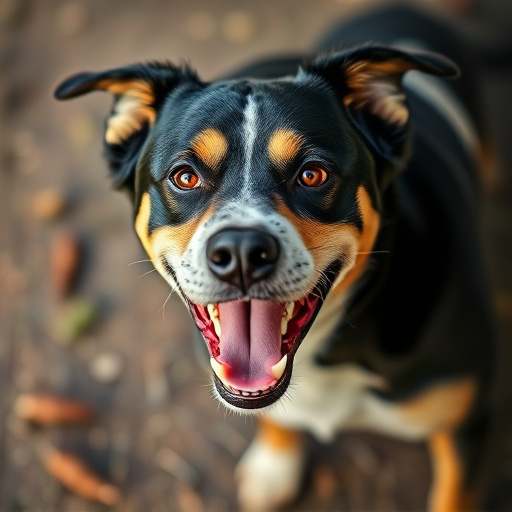The OC percentage in canine pepper spray impacts its effectiveness as a deterrent, with higher concentrations for aggressive dogs and lower levels for safer, broader use. Integrating UV dye technology enhances visibility, aiding in identifying areas needing monitoring or reinforcement during training. A 2% to 10% OC range is typical for different applications, with law enforcement grades exceeding 10%. Safety precautions include protective gear, ventilation, proper usage, and adhering to local laws regarding OC percentage and product reach.
“Unleashing a powerful yet safe tool in the world of canine deterrence, this article explores the innovative use of mace dog deterrent with UV dye. With an emphasis on understanding the science behind OC (Oleoresin Capsicum) percentage and its impact, we delve into how these sprays work effectively against aggressive dogs. Learn about the unique properties of UV dye, offering both a visible warning and a calming effect. Discover the key role of OC Percentage in determining spray potency while exploring safe usage guidelines for responsible dog management.”
- Understanding Canine Pepper Spray's Effectiveness
- The Role of UV Dye in Dog Deterrent
- OC Percentage: Key to Canine Spray Power
- Safe Usage and Considerations for Mace Dog Deterrents
Understanding Canine Pepper Spray's Effectiveness
Canine pepper spray, also known as mace for dogs, has gained popularity as a non-lethal deterrent to protect against aggressive canine encounters. Its effectiveness lies in its ability to temporarily incapacitate a dog by causing irritation and discomfort. The key active ingredient is often oleoresin capsicum (OC), measured in percentages, which determines the spray’s potency. Standard OC concentrations in canine pepper spray range from 2% to 5%, ensuring it’s safe for use while still providing a powerful deterrence against potential threats.
The OC percentage in the spray plays a crucial role in its performance. Higher concentrations offer more intense irritation, increasing the likelihood of the dog disengaging from the perceived threat. However, it’s essential to balance this with safety considerations; lower OC levels are less likely to cause severe or prolonged discomfort, making them suitable for broader applications and minimizing potential harm to pets, owners, or bystanders.
The Role of UV Dye in Dog Deterrent
The inclusion of UV dye in dog deterrents like canine pepper spray is a strategic move, serving as both a visual and practical component to effective animal deterrence. This dye, often invisible to the naked eye under normal lighting conditions, plays a crucial role when activated by sunlight or specific lights. Once triggered, the UV dye releases its vibrant color, marking the area where the deterrent has been used. This visual cue is significant for several reasons: it acts as a psychological deterrent, warning approaching dogs of the potential consequences, and it aids in identifying areas that require continued monitoring or reinforcement of training.
Moreover, the OC (Oleoresin Capsicum) percentage in these sprays is a key factor, with higher concentrations offering greater effectiveness. UV dye technology enhances the impact of OC by providing tangible evidence of its use. In practice, this means that when a dog encounters a marked area, the memory of the deterrent’s effect, coupled with the visible (or now visible) mark, reinforces the message to stay away. This multi-faceted approach ensures that deterrents remain not just functional but also adaptable and responsive in various environments.
OC Percentage: Key to Canine Spray Power
The effectiveness of canine deterrents, like pepper spray, lies in a crucial component known as OC (oleoresin capsicum) percentage. This percentage represents the concentration of capsaicin, the active ingredient responsible for the burning sensation it induces when sprayed onto skin or eyes. A higher OC percentage means more capsaicin and thus, stronger irritant properties.
In terms of spray power, a typical pepper spray designed for dogs will range from 2% to 10% OC. Lower concentrations are suitable for training purposes, while higher ones are intended for more robust deterrence. Law enforcement-grade dog deterrents often exceed 10% OC, ensuring their potency as powerful tools in managing aggressive canine behavior.
Safe Usage and Considerations for Mace Dog Deterrents
When using mace dog deterrents, safety should be the top priority. Canine pepper spray, or mace, is designed to temporarily incapacitate a dog through irritation, allowing the owner time to safely remove their pet from potentially dangerous situations. However, it’s crucial to understand and follow safety guidelines. These products contain capsaicin, the active ingredient found in chili peppers, which can cause severe eye and respiratory irritation in humans, pets, and wildlife. Therefore, users should wear protective gear, including gloves and safety goggles, and ensure good ventilation during application.
Key considerations for safe usage include keeping mace dog deterrents out of reach of children and pets other than the targeted canine. Users must be aware of local laws and regulations regarding the use of pepper spray on animals, as these vary by region. Additionally, understanding the OC percentage in canine pepper spray is essential. Concentrations typically range from 2% to 10%, with higher percentages requiring more care in application to minimize off-target effects. Users should practice responsible usage, only deploying the spray when necessary, and follow instructions carefully to ensure both pet safety and effective deterrence.
The integration of UV dye into canine pepper spray, along with an optimal OC (Oleoresin Capsicum) percentage, offers a safe and effective solution for deterring aggressive dogs. By understanding the active ingredients and their interaction, users can make informed decisions to protect themselves and their pets while adhering to responsible usage guidelines. In today’s world, where dog encounters can vary widely, these innovative deterrents provide a layer of security, ensuring peaceful interactions with four-legged friends.
